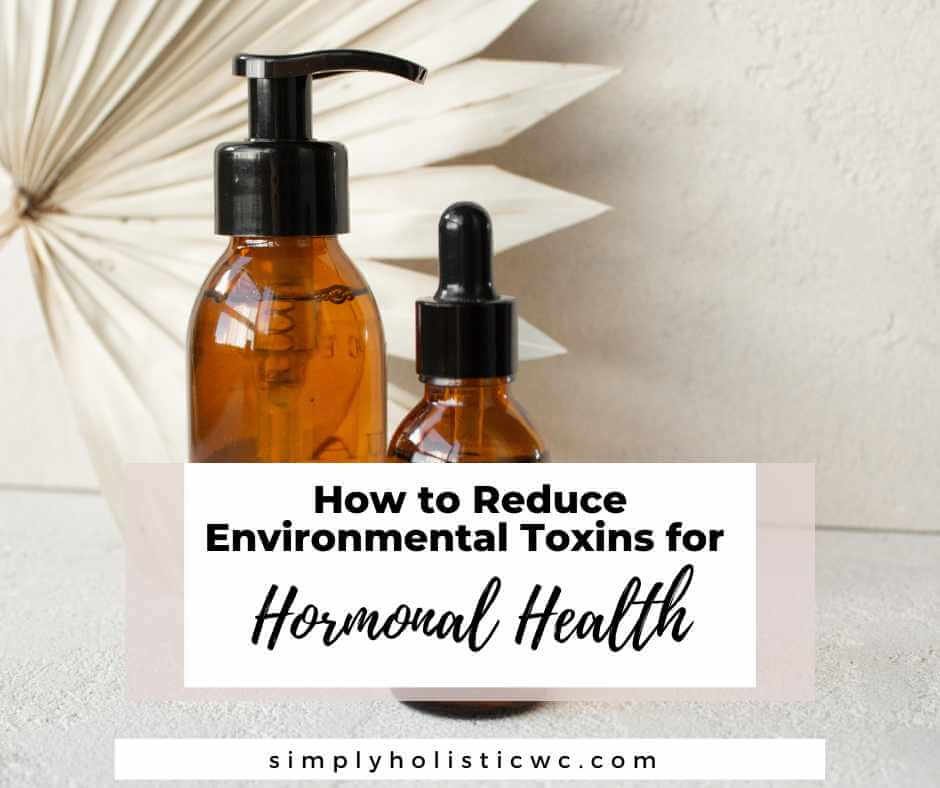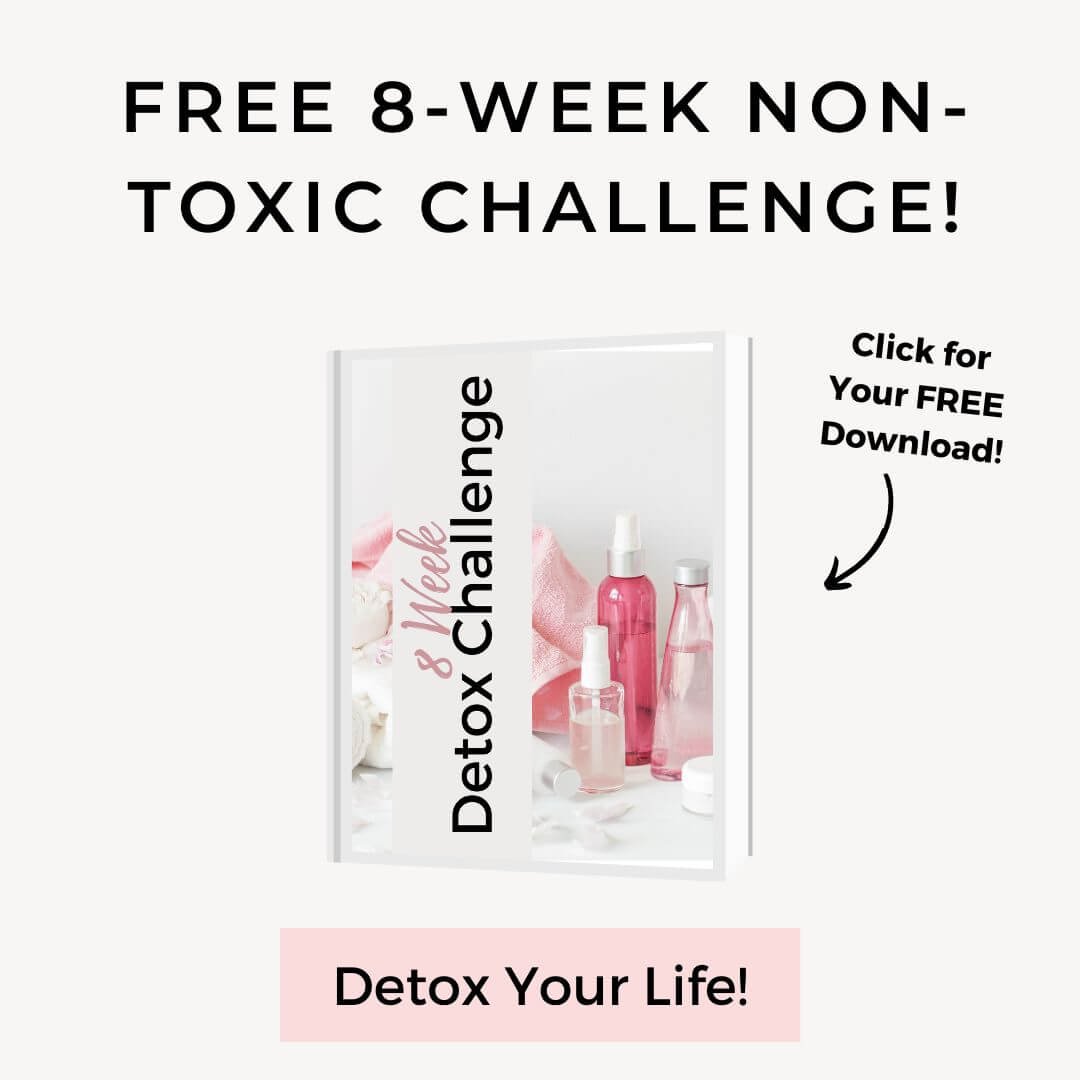How to Reduce Environmental Toxins for Hormonal Health
Are you feeling like your hormones are out of balance?
Mood swings, fatigue, and other uncomfortable symptoms might be telling you that the environment in which you live has become a bit too toxic.
But it doesn't have to stay that way! In this post, we'll look at how to reduce environmental toxins for better hormonal health.
From reducing processed food consumption to changing what products you use around the home, there are simple steps any woman can take towards lowering their environmental toxin exposure and improving their hormone health!
This post may contain affiliate links for which I may earn a small commission. This means shopping through these links supports my blog at no cost to you. Please read my full policy. Thank you!
What Are Environmental Toxins?
So, what exactly are environmental toxins? In short, they're substances that are harmful to our bodies and exist in our environment.
Think air pollution, heavy metals, pesticides in our food, and chemicals in our cleaning products - all these things can be considered environmental toxins.
The scary part is that exposure to these toxins harms human health and can negatively impact our health and well-being.
We will look at steps to reduce our environmental exposure to these toxins and protect our hormonal health later in this post.
Can Toxins Cause Hormone Imbalance?
Let's talk about how toxins can really mess with our hormones.
First things first, let's talk about endocrine disruptors.
These annoying little chemicals interfere with our hormonal systems and can really throw everything out of whack.
You can find them in all sorts of everyday products like plastics, cleaning supplies, and even our water supply.
When exposed to these endocrine-disrupting chemicals, they can mimic or block hormones in our bodies, leading to a range of symptoms of hormone imbalance.
Some of these symptoms include irregular periods, acne, weight gain, mood swings, fatigue, and even infertility.
For women, endocrine disruptors can also mess with fertility and increase the risk of breast cancer.
And for men, exposure to these toxins has been linked to lower sperm count and an increased risk of prostate cancer.
What are Some Other Effects of Environmental Toxins?
Alright, let's talk about some of the other not-so-great health risks of environmental toxins besides the effects on the endocrine system:
Pregnant women are especially vulnerable to these toxins, as they can affect fetal development and even be found in breast milk. Exposure has been linked to an increased risk of congenital disabilities and developmental delays.
Exposure to environmental toxins has also been linked to a range of other health problems, including:
Diabetes
Heart disease
Obesity
High blood pressure
Problems with reproduction
Increase cancer risk
Immune and nervous system function
What Ingredients Affect Hormones?
Let's get into some of the specific ingredients that can really mess with our hormones.
Keep an eye out for these guys in your products:
Bisphenol A (BPA) - commonly used in polycarbonate plastics and epoxy resins, this sneaky ingredient can be found in all sorts of plastic products, including food storage containers.
Phthalates - used to make plastics more flexible, phthalates are often found in food packaging, cosmetics, medical devices, and children's toys. They are also found in scented products, like body wash.
Parabens - commonly found in personal care products like shampoos and lotions.
Triclosan - found in some anti-bacterial and personal care products like soap and body wash.
Perfluoroalkyl and Polyfluoroalkyl Substances (PFAS) - used in industrial applications like firefighting foams and non-stick pan coatings, these substances can also be found in paper and textile coatings.
Dioxins - This is one of the persistent organic pollutants, meaning that it’s a substance that persists in the environment. It’s also a byproduct of paper bleaching and herbicide production. They’re also released into the environment during wildfires and waste burning. Dioxins are also found in dairy products.
Perchlorate - often found in drinking water and fireworks, this ingredient is a byproduct of weapon, aerospace, and pharmaceutical industries.
Polybrominated diphenyl ethers (PBDE) - used to make flame retardants for household products such as carpets and furniture foam.
Polychlorinated biphenyls (PCB) - used in electrical equipment like transformers, PCBs can also be found in heat transfer fluids, hydraulic fluids, plasticizers, and lubricants.
These are just a few of the many ingredients out there that can mess with our hormones.
↓PIN IT FOR LATER!↓
Where Are These Toxic Ingredients Found?
Let's break it down - where exactly can we find these toxic chemicals?
Here are just a few examples:
Cigarette smoke
Furniture
Perfume and personal care products
Detergents
Cosmetics
Cleaning products
Receipts
Airbags
Toys
Packaging
Plastic cups and plates
Food
Plastic water bottles
Feminine hygiene products
Clothing
Mattresses and furniture
Electronics
Hair Dye
Keep in mind that these ingredients can be found in all sorts of other places and other consumer products. But this list should give you an idea of where to start looking.
What Are Some Non-Toxic Products?
If you're looking for some excellent non-toxic product recommendations, be sure to check out my favorite products page. I've got a bunch of non-toxic beauty products listed there that I use and love!
Another great resource for checking the safety of your products is the Environmental Working Group (EWG) website.
They have a huge database of products with ratings based on their potential toxicity. It's worth looking to see how your current products rank.
Also, the Environmental Protection Agency (EPA) has a list where they look at the potential risks from new and existing chemicals to protect public health.
I know that when I first started doing a toxin overhaul, I really stressed myself out trying to find the "perfect" products.
But I quickly realized that striving for progress, not perfection, is what's important. None of us are perfect, and that's okay!
Just do the best you can with the information you have. And remember that every little step toward reducing your exposure to toxins is a step in the right direction.
Are you ready to take control of your hormone health and start living a cleaner, non-toxic lifestyle?
Download my FREE 8-Week Non-Toxic Challenge to get started!
Each week, I'll give you actionable steps to help you reduce exposure to harmful chemicals and toxins in your daily life.
By the end of the challenge, you'll have a new understanding of how to live a healthy and sustainable lifestyle.
Grab your free copy below and join me on this journey toward optimal health!
↓GET YOUR FREE DOWNLOAD↓
Tips for Reducing Environmental Toxin Exposure
Let's get into some tips on how to reduce your exposure to environmental toxins. Remember that it's impossible to avoid them all completely, so don't stress too much - just do the best you can!
Here are some ideas:
Look for products that are labeled as paraben-free, phthalate-free, and BPA-free. This will help you avoid some of the biggest culprits when it comes to hormone-disrupting ingredients.
Avoid or limit your use of pesticides. This can be tough if you're a big fan of gardening. But there are natural alternatives out there that can help keep your plants healthy without compromising your health.
Drink filtered water. Tap water can contain all sorts of nasty stuff. So investing in a good water filter is smart. Plus, it can save you money on bottled water in the long run!
Use natural cleaning products. Harsh synthetic chemicals in cleaning products can wreak havoc on our hormones. Look for natural options (or even make your own!) to keep things clean and toxin-free.
Choose organic food and produce whenever possible. Pesticides are a major source of environmental toxins, so opting for organic fruits and veggies can help reduce your exposure. You can check out the EWG’s dirty dozen list for produce with the highest levels of pesticides.
Be mindful of what you're cooking with. Non-stick pans can contain PFAS, a hormone-disrupting ingredient. Opt for stainless steel, ceramic, or cast iron instead.
Avoid using plastic containers for food storage. Plastic can contain all sorts of chemical substances that can leach into your food. Opt for glass or stainless steel instead. If you do use plastic containers, look for those that are labeled BPA free.
Limit your use of fragranced products. Fragrance can be a hidden source of toxins, so consider using unscented products or natural alternatives.
Take your shoes off at the door. We do this in my home! This simple step can help reduce exposure to toxins that might be tracked in from outside on your feet.
Wash your hands. It sounds too simple, but washing your hands with soap and warm water for at least 20 seconds can help reduce the amount of toxins and bacteria you're exposed to.
Limit processed foods. The packaging of processed foods can contain hormone-disrupting toxins in the packaging. Opt for fresh, unprocessed foods when you can.
These are just a few ideas to get you started on reducing your exposure to environmental toxins. Remember, every little bit counts!
↓PIN IT FOR LATER!↓
Conclusion
So there you have it - some tips on finding non-toxic products and reducing your exposure to harmful toxins.
Remember, it's all about progress, not perfection.
Check out my favorite products page for some ideas, and don't forget to consult resources like the EWG website for more information.
References:
https://www.ncbi.nlm.nih.gov/pmc/articles/PMC6501744/
https://www.epa.gov/endocrine-disruption/overview-endocrine-disruption#:~:text=Effects%20of%20Endocrine%20Disruption,-In%20the%20last&text=developmental%20malformations%3B,immune%20and%20nervous%20system%20function.
https://health.clevelandclinic.org/how-environmental-toxins-can-impact-your-health/




